The earliest Chinese noodles can be traced to 4,000 years ago and was found in Lajia Site along Yellow River. Over time, in a country of the magnitude of China, the world’s second largest in area and with 56 ethnic groups, noodles evolved into various categories. Noodles can be divided into different types “according to the classification of the shape of noodles, seasoning gravy, cooking craft and so on” (Zhang). Today, there are more than 1,200 types of noodles people normally consume. In this paper, I will mainly discuss the evolution of noodles in contemporary China through the lens of social aspects.
The number of categories of noodles mainly increased in ancient China, especially in Wei, Jin and Southern and Northern Dynasties. From my perspective, the evolution of noodles in pre-modern era is resulted from the cultural and natural factors in China.
In the pre-modern era, the formation of different varieties of noodles and their evolution can be influenced by ethnical, geographical and climatic differences across China. There are 56 ethnic groups in China and each ethnic group has its own customs and taboos for eating. For example, Hui people are Muslims and they are not allowed to eat pork. As a result, the only meat can be cooked in Lanzhou pulled noodles, which is a type of noodle invented by Hui people, is beef. Geographical variations also play a significant role in the evolution of noodles. In China, wheat is mainly cultivated in the North of Qinling Mountains – Huaihe River Line, which is the line separating North China and South China in the eastern part of China. Thus, noodles in North China are made from wheat. Paddy is cultivated in South China and therefore a large number of noodles originating in South China are made of rice, such as Yunnan rice noodles and Guilin rice noodles. Besides, climatic differences are significant factors underlying the noodle evolution. The climate could influence the local cuisine and then influence the way of cooking noodles. Provinces in the South-western part of China are very humid and people living in these areas would feel moist inside their bodies in the winter. In order to eliminate dampness and keep bodies warm, they eat a lot of pepper which becomes an indispensable ingredient of their cuisine. When they cook noodles, they will also add pepper and noodles in these areas such as Chongqing street noodles and Sichuan noodles are conspicuous examples of spicy noodles. In all, during the evolution of noodles in pre-modern era, ethical, geographical and climatic differences across China significantly contribute to the formation of different types of noodles.
The advancement of technology and the application of scientific methods mark the transition from the pre-modern era to the modern era. In my following passage, I will examine how social factors influence the evolution of noodles in contemporary China. In my opinion, social aspects, conspicuously the modern technology and social values, influence the evolution of noodles and endow them new forms in contemporary China.
Modern Technology as a Social Factor in Noodle Evolution
The Industrial Revolution, which took place from 18thto 19th century in Europe and America, replaced hand tools or basic machines with “powered, special-purpose machinery, factories and mass production” (Industrial Revolution). Under the Industrial Revolution, societies transform with the advancement of technology, which frees people from laborious work and makes life more convenient.
Although the Chinese industrialization did not begin until the 1950s, far later than the original Industrial Revolution in the Western world, it brought the same end to the Chinese society. Factories and machines replaced many jobs and increased productivity. In the absence of machines, noodles as a staple food in China was hand-made and it took a great amount time to grill the wheat into powder, mix the dough, knead the dough and shape noodles. With the modern technology, automatic noodle making machine was invented and marked a revolution in noodle making in China.
Today, most noodles on the market or in noodle restaurants are made by noodle making machines. Compared to hand making, the noodle making machine has several strengths. First, it takes less time and is easier to use the machine to make noodles than to make noodles by hand. Under the technological progress, noodle making machines have been upgraded since its initial appearance and makes the noodle making process much easier. In the traditional process of making noodles by hand, people have to grill the wheat into powder, mix the flour with water, knead the dough and shape noodles. It normally takes people at least one hour to make noodles by hand. However, with the noodle making machine, people only need to pour the flour and water in the proper amount into the machine and wait at most ten minutes to get noodles. The machine does all the laborious work and save time for people. People do not need to learn the complex process of making noodles and they can use the saved time to work on other things. What is more, the noodle making machine will produce noodles more uniform in texture and shape. When people mix and knead the dough by hands, it is extremely hard to make the water and flour completely mixed and evenly distributed. Therefore, it is not surprising that noodles made by hand sometimes are not uniform in their texture and this difference then will affect the taste. It is also hard to pull or cut all noodles in the same shape by hand since people cannot measure the size when they shape noodles. However, the noodle making machine could completely mix the dough and cut noodles all in the same shape with extra pressure by power. Besides, the machine makes noodles more accessible to people and allows people to fresh noodles whenever they like. Noodles is the staple food in North China and thus most people there are able to make noodles by hand. Although noodles are still a significant part of the food system in South China, rice is more consumed as the staple food. Therefore, many people in South China such as my family are not able to make noodles and every time we want to eat noodles we go to a noodle restaurant or buy dried noodles from the store. In this situation, the noodle making machine allows people who cannot make noodles by hand to have fresh noodles at home whenever they want. In a conclusion, the use of machine, as a product of social changes, brings a revolution in the noodle making process and contribute to the evolution of noodle, from hand making to machine making. As a result, it is easier to make noodles more uniform in both texture and shape and noodles become more accessible to people who cannot make them by hand.
Despite the revolution in noodle making process, social changes and modern technology also endow new forms of noodles, most notably the instant noodles. As the pace of life gets faster in the contemporary society and under the influence of the economic factor, instant noodles become an incomparable choice for meal. A pack of instant noodles includes a dried noodle block, sauce and dehydrated vegetable bags. With the proper amount of boiling water, people are able to get a bowl of delicious instant noodles in three minutes. The invention of instant noodles is resulted from the modern technology and scientific knowledge. Without drying machines, a bunch of noodles would not be packed into a small block and the volume of the noodles and vegetable bags would be much larger. The modern technology makes instant noodles portable. What is more, due to the preservatives added to the dried noodle block and sauce bags, instant noodles can be stored for a long time and ready to eat after immersed in hot water. Instant noodles quickly become popular around the world since the easy and quick preparation is perfectly compatible with the pace of life in the contemporary society. Also, Instant noodles are much affordable than traditional noodles and thus decrease the economic pressure for a meal. In all, the technology and scientific knowledge bring a new form of noodle – instant noodles, which change the way people eat noodles and bring more convenience. Instant noodles define a new way of eating noodles, in which people do not need to get fresh noodles and cook any more. Under the fast pace of life and economic pressure, instant noodles become a perfect choice for many people, especially the white-collar class.
Besides, the modern technology increased the population mobility in China and resulted in the fusion of different local cuisine. Under the unavoidable trend of mobilization and globalization, noodles evolved in that some traditional ways of cooking noodles are altered by the cuisine from a different area. Noodle dishes which embrace different cooking styles are common in contemporary China. One noodle restaurant in my hometown, which is a city in the South-eastern part of China, serve a very special noodle dish called noodles in pickled cabbage and fish pot. This noodles dish uses the same noodle as traditional noodle restaurants in my hometown do. However, it is cooked in a very different way and has a special side dish – the pickled cabbage and fish pot, which is a typical dish in Chongqing. Chongqing is a city 1500 miles away from my hometown and it is really surprising to combine traditional noodles in my hometown with a typical dish from such a city. The spread of food over such a long distance is the result of modern technology. Due to the advanced public transportation in China such as the high-speed railway, people are able to move around and there is an increase in the immigration population. As a consequence of the increasing population mobilization, food, as a carrier of local culture, spread to other areas over time. In a conclusion, the modern technology lead to increasing mobilization and noodles evolved when different styles of cooking are merged.
Social Values as a Social Factor in Noodle Evolution
Since the Chinese Economic Reform implemented in 1978, China experienced rapid economic and social development and showed remarkable development potential. Under this situation, social values changed greatly with respect to the changing living conditions. When people’s basic capital and mental needs are fulfilled, the role of food is expanded from merely sustaining life and different social values bestow food new roles. Noodles, as a significant part of the food system, have functions other than nourishment. Various social values contribute to the evolution of noodles during which new forms of noodles appear and the preparation processes of noodles are altered. There are two very common social values in contemporary China – more valued if rare and the increasing attention on health – shaping the evolution of noodles.
The concept, that an object is valuable if it is rare, has existed since ancient China. This concept also applies to food in that very rare ingredients, such as cubilose and sharks’ fin, are highly valuable. However, without the economic foundation and before the basic needs of living are sustained, the primary function of food is still nourishment. After the economic and social development in China, more people enter the middle class and have more spare money. With the increasing fortune, a large number of people intend to show their wealth through eating highly valuable dishes, which becomes ac trend in contemporary China. Traditionally, noodles are the staple food people can afford for meals. As a result of this emerging social value, some new forms of noodles appear, which are cooked with precious ingredients. In recent years, seafood noodle restaurants become very popular, spreading from cities by sea to inland cities. Noodle dishes served in these restaurants are much expensive than traditional noodle dishes due to the use of expensive seafood such as abalone and crab as side dishes. The increasing popularity of seafood noodle restaurants shows the social value that some people want to eat expensive food to show their wealth and this social value brings new way of cooking noodles.
Another social value contributing to the evolution of noodles is the increasing attention on health. When people get wealthier, they would have extremely good meals and in take nutrients in amounts far exceeding the standard needs. Many maladies, such as heart disease, high blood pressure and diabetes, are resulted from unhealthy eating habits. Therefore, an increasing number of people realize the importance of a balanced meal and pay a great deal of attention to what they eat. Bearing this social value and the goal of staying healthy in mind, people alters the way of making noodles and cooking noodles. Today, noodles which are made from the mixture of vegetable juice and flour are very popular since people believe that vegetables are salutary to health and noodles made in this way would be healthier than normal noodles. What is more, it has been proved that some chemical seasonings such as chicken extract and monosodium glutamate are detrimental to health. People change the original ways of cooking noodles by decreasing the amount of seasonings added in noodles. In this way, the taste of the traditional noodle dish changes. To sum up, the focus on health as a popular social value changes the preparation of noodles and influence the noodle evolution.
In a conclusion, there are various social factors behind the evolution of noodles in contemporary China. The modern technology and different social values endow noodles new forms and change the way of making as well as cooking noodles.
Works Cited
“Industrial Revolution.” History,https://www.history.com/topics/industrial-revolution. Accessed 27 June 2018.
Zhang, Na and Guansheng Ma. “Noodles, Traditionally and Today.” Journal of Ethnic Foods, vol. 3, 2016, pp. 209-212.


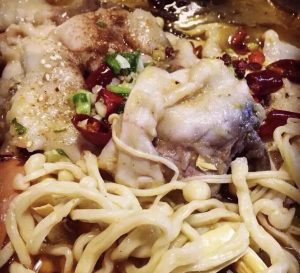
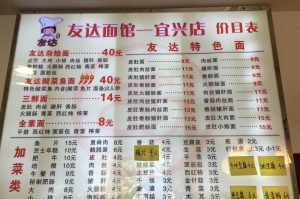
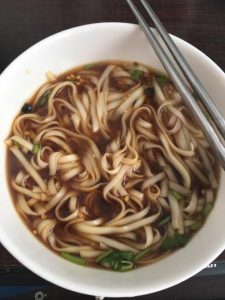
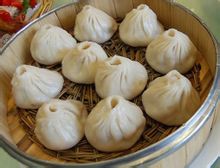
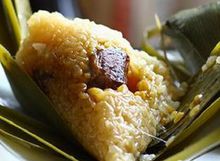 Rice dumpling is the traditional food for Dragon Boat Festival. According to the historical documents, Quyuan, both a politician and a poet from Chu – a country in Zhanguo period, was exiled by the emperor. He was very upset and drown himself in Miluo River. He was highly respected by citizens in Chu, and they threw rice dumplings into the river to prevent fishes from consuming his body. Also, they used boats to find his body. Thus, people commemorate Quyuan on Dragon Boat Festival and rice dumpling becomes a symbolic food for the festival. Green dumpling is the traditional food for Thom-sweeping Day when people commemorate the dead in Jiangnan area. According to the legend, Li Xiucheng, the leader of Taiping Kingdom of Heaven (from 1851-1864), was chased by the army directed by the emperor from Qing Dynasty on the Thom-sweeping Day. He was camouflaged as a farmer and the army did not find him. However, the army checked everyone to prevent farmers from bringing food to Li. A farmer mixed the juice of Chinese mugwort – 艾草, to make the dumpling look like grass, and brought green dumpling to Li. Li survived after he was fed on the green dumpling. Later, he made eating green dumpling on Thom-breading day a rule.
Rice dumpling is the traditional food for Dragon Boat Festival. According to the historical documents, Quyuan, both a politician and a poet from Chu – a country in Zhanguo period, was exiled by the emperor. He was very upset and drown himself in Miluo River. He was highly respected by citizens in Chu, and they threw rice dumplings into the river to prevent fishes from consuming his body. Also, they used boats to find his body. Thus, people commemorate Quyuan on Dragon Boat Festival and rice dumpling becomes a symbolic food for the festival. Green dumpling is the traditional food for Thom-sweeping Day when people commemorate the dead in Jiangnan area. According to the legend, Li Xiucheng, the leader of Taiping Kingdom of Heaven (from 1851-1864), was chased by the army directed by the emperor from Qing Dynasty on the Thom-sweeping Day. He was camouflaged as a farmer and the army did not find him. However, the army checked everyone to prevent farmers from bringing food to Li. A farmer mixed the juice of Chinese mugwort – 艾草, to make the dumpling look like grass, and brought green dumpling to Li. Li survived after he was fed on the green dumpling. Later, he made eating green dumpling on Thom-breading day a rule. 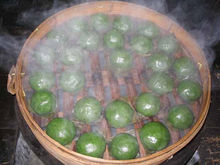 This legend is not verifiable in any historical documents but eating green dumpling on Thom-sweeping Day has become the tradition in my home city. It is made of rice and the stuffing is always the red bean paste. It may be too sweet for people from the Northern part of China, but it represents the cooking style in Jiangnan. In a conclusion, mini soupy bun from Wuxi, rice dumpling and green dumpling can represent my cultural background due to their deep historical backgrounds and unique cooking style.
This legend is not verifiable in any historical documents but eating green dumpling on Thom-sweeping Day has become the tradition in my home city. It is made of rice and the stuffing is always the red bean paste. It may be too sweet for people from the Northern part of China, but it represents the cooking style in Jiangnan. In a conclusion, mini soupy bun from Wuxi, rice dumpling and green dumpling can represent my cultural background due to their deep historical backgrounds and unique cooking style.